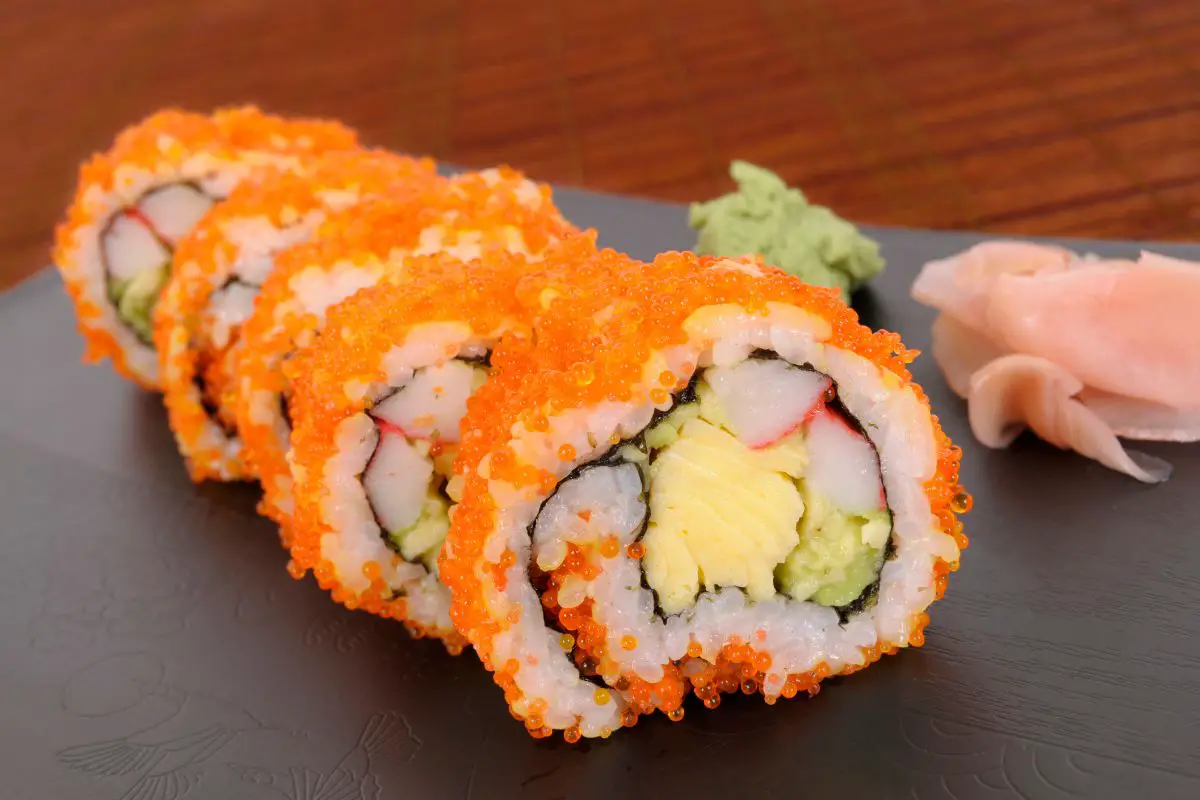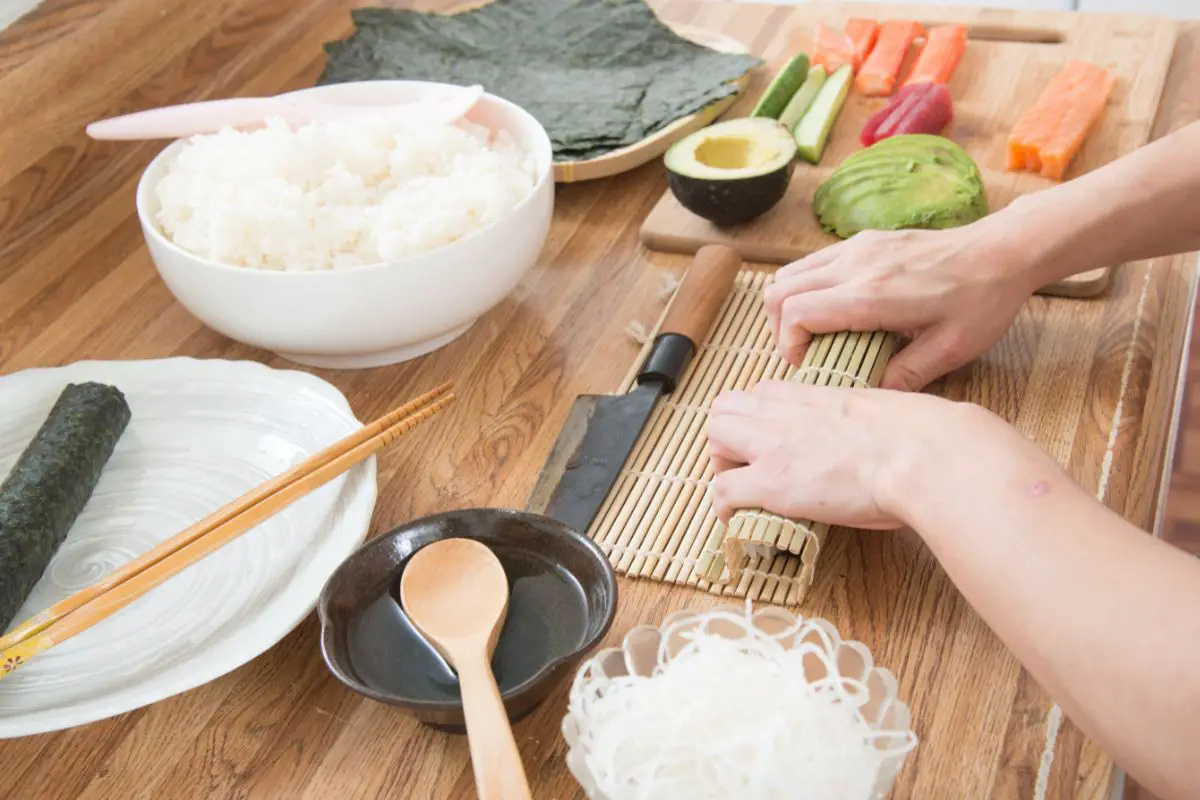Sushi has become increasingly popular throughout the world, thanks in part to the Internet, which has influenced and encouraged the coming together of world cultures since its inception several decades ago.

This has led to many international interpretations of classic Japanese cuisine, the Boston Roll being one such example.
But what exactly is a Boston Roll, and how is it made?
Following in the footsteps of the California Roll - which uses imitation crab meat, known as ‘surimi’, as the main ingredient - the Boston Roll is an Americanized adaptation of classic Japanese sushi.
A classic example of fusion food, the Boston Roll replaces the classic raw fish found in traditional Japanese sushi with poached shrimp.
This has become a common practice in the United States, with sushi chefs experimenting with flavors and substitute ingredients as a means of making otherwise polarizing food more palatable to American consumers and sushi initiates.
The classic Boston Roll retains its Japanese heritage, maintaining the ‘nori’ seaweed for the outer layer, providing a traditionally salty flavor palette synonymous with Japanese sushi.
The Boston roll also contains avocados and cucumbers, and while the former are not usually considered authentic for Japanese sushi, historians believe that the inclusion of avocado acts as an adaptation of traditional Asian ingredients that are either unknown or uncommon in the west.
Boston Rolls are incredibly similar to California Rolls, including avocado, nori seaweed, and cucumber.
As is standard in Japanese-American fusion, both rolls come with wasabi, pickled slices of ginger, soy sauce, and occasionally a spicy mayonnaise.
The only real difference is the main ingredient, with Boston rolls having a poached shrimp base, while California rolls having surimi - an artificial form of crab meat.
When making Boston Rolls, there are specific processes that must be followed in order to get it right.
Like most Japanese food, there are specific, often complex steps involved, and can require a lot of concentration and practice to master.
Before you can properly begin, you need to start by getting the right ingredients - namely avocado, shrimp, rice, nori seaweed, and cucumber.
Once you have these, you can properly begin cooking the rice with a combination of rice vinegar, salt and pepper to create a signature texture and flavor palette commonly found in Japanese cuisine.
You should also poach the shrimp - a process that involves putting them in boiling water for approximately 3-5 minutes until the flesh is opaque and white in color.
Once the ingredients have cooled, the first step is to lay out your nori seaweed sheets.
If you have a Japanese sushi mat, then this should be an easier task for you. These are usually made from bamboo, and can be found in most homeware stores.
Lay out the seaweed on the mat, before layering with the cooled rice, before flipping the nori sheet over so that the rice is on the exterior.

Once you have done this, you can then start padding out the otherside of the seaweed with the avocado, cucumber, and poached shrimp.
Once the interior is covered, you can then roll the sushi mat until the ends meet.
For a finishing touch, some Boston rolls have tobiko on the outside to add a nice crunchy texture to the exterior of the roll.
Tobiko is fish roe, small fish eggs that have a crunchy texture, very much like a seed.
As with a California roll, the tobiko used on a Boston roll tends to be orange in color, and this has become the signature for this dish.
When it comes to Boston rolls - as with any fusion sushi - there are several benefits.
In traditional Japanese food, a lot of the fish used is either endangered, or unethically sourced, and as a result, westerners might not wish to participate in this industry.
Using poached shrimp or artificial crab is a good way of ensuring that they were sustainably and ethically caught.
Of course, while eating (some) raw fish and meat is safe, there can still be anomalies or potential problems if the ingredients are not properly stored, refrigerated, or prepared.
If they are not stored, chilled, or prepared in a clean environment, then they could pose the risk of food poisoning - with illnesses like salmonella being especially dangerous to consumers.
Boston rolls are also a great source of nutrition, and contain healthy ingredients that are a great addition to any balanced diet.
Brown rice can be substituted for white, improving the healthiness of the dish even more, and appealing to more restrictive diets.
Avocado is a source of healthy fats, and contains vitamins C, E, K, and B6, while the nori seaweed is rich in vitamins A, C, E, and K.
Cucumber is rich in water and vitamins C, B, and K, as well as other minerals, and the poached shrimp is a good source of protein, minerals, as well as zinc, vitamin E, and B6.
In terms of the calories found in a Boston roll, the numbers can vary depending on the ratios of ingredients, and any sauces used.
Spicy mayonnaise in particular can make them more calorific, as can using white rice.
However, switching to brown rice can and using minimal sauce can be a remedy to this.
And there we have it, everything you need to know about the Boston roll, and the best way to prepare one for yourself.
A popular mainstay in the American sushi industry, the Boston roll is a great example of modern fusion culture, and goes to show how we can all experience food from other cultures in a manner that is catered specifically to our needs and likes.
Why not try some for yourself? Something tells me you won’t be disappointed!
